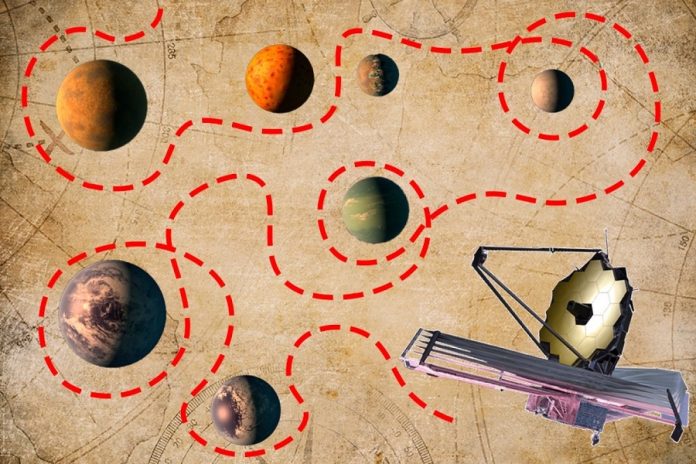
When the James Webb Space Telescope was launched it came with a fanfare expecting amazing things, much like the Hubble Space Telescope.
One of JWST’s most anticipated target was TRAPPIST-1.
This inconspicuous star is host to seven Earth-sized planets, with at least three in the habitable zone.
The two inner planets are airless worlds but so far there has been no word of the third planet, the first in the habitable zone.
The question is why and what makes it so tricky to observe?
TRAPPIST-1 is a red dwarf star about 41 light years in the constellation Aquarius. The interest in the planets in the habitable zone is that the conditions could allow for the existence of liquid water.
The seven planets were discovered through transit photometry where tiny drops in brightness of the star are observed due to the passage of the planets in front of the star.
The planets that orbit the star all have fairly short orbital periods from 1.5 days to 20 days. The result of this is that their transits across the stellar surface often overlap.
The launch of the JWST in 2021 reignited the interest in exoplanet studies. Its predecessor the Hubble Space Telescope was never expected to last as long to JWST was able to complement the famous telescope.
Setting itself apart from Hubble by its advanced infrared capability, JWST was ideally placed to study exoplanet atmospheres.
Fundamental to the operation of the JWST is a large, multi-segment mirror measuring 6.5 metres in diameter and a whole host of sophisticated instruments.
A team of astronomers have been studying TRAPPIST-1 and its system of planets using JWST, exploiting its infrared capabilities.
Using a technique known as transmission spectroscopy the starlight is explored as it passes through the planetary atmospheres as they pass in front of the star. Studying the light in this way can reveal the elements in the atmosphere.
Three years in though and challenges have slowed them down.
Now, a paper published in Nature Astronomy highlights the challenges they faced and proposes how to overcome them.
Top of the list relates to the non uniformity of a star. Those interested in solar astronomy will already be familiar with sun spots, flares and other solar phenomenon.
These are seen on stars too and regions where cooler regions form can often harbour water vapour, playing havoc with transmission spectra and making it difficult to identify elements in the planetary atmosphere rather than in the star. This is known as stellar contamination.
Previous issues like this have been seen by astronomers studying exoplanet atmospheres using Earth based telescopes like the Magellan Telescope in Chile. Previously however, these issues were often simply ignored but the greater sensitivity of JWST causes more of a problem. There is a relatively simple work around however by observing the star as it rotates to build a picture of the stellar surface, allowing a more accurate analysis of the planetary atmosphere.
Using TRAPPIST-1 as a test bed, it is hoped that other challenges and their solutions can be tested before being applied to other, less easy to observe explanatory systems.
The team propose that the exoplanet and JWST community work together on research projects to maximise efficiency in driving out solutions to other challenges in the road ahead.
Written by Mark Thompson/Universe Today.



